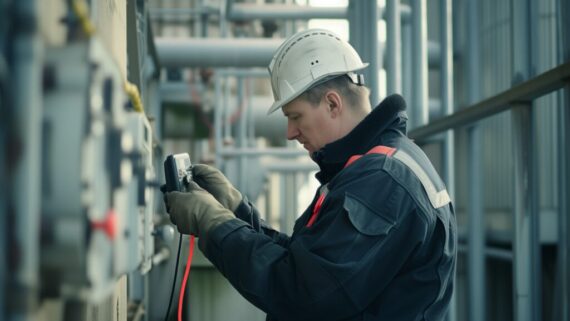
5 Myths About Safety Culture
Safety precautions and regulations are not always the most exciting part of a workplace, but they are some of the most important pieces of a great company. Everyone knows that a safer work environment is a better work environment, but creating that culture takes time and effort. Believing misconceptions about workplace safety puts everyone at risk, and addressing these myths head-on will improve the safety culture in your company. Below you will find five common myths about safety culture so that you can start working to combat them in your company.
Myth # 1: Safety Culture Must be Created and Led by Management
It’s easy to say, “that’s not my job,” but maintaining a safe work environment is everyone’s job – regardless of title. Often, the strongest advocates are among the rank-and-file employees because they are the ones who are closest to risky and potentially dangerous situations.
To improve your company’s safety culture, you must create an environment that encourages and rewards safe behaviors. Have open communication between managers and employees, share best practices across the company, and consistently ask for feedback.
Myth #2: Safety is Costly and Not Profitable
In many companies, there is the perception that safety programs do not provide a return on investment. This could not be further from the truth. Likely, this myth was created and spread by employers who didn’t want to put in the necessary effort or were unsuccessful in properly training employees.
Companies who make the investment in workplace safety experience lower unexpected costs, such as penalties, injuries, accidents, employee turnover, and insurance premiums. In fact, it costs more to do nothing because unsafe work environments breed many other expensive problems, such as unhealthy employees and unscheduled equipment repairs.


Myth #3: If Your Employees Complete Safety Training, You Will Have a Strong Safety Culture
This is a common myth because companies would like to believe that training is enough. With many safety training systems, managers can quantify how many employees were exposed to each training component and which topics need more focus. But what managers and employers often miss is if each employee can put that safety knowledge to work in real life.
Verify employee competency through consistent on-the-job observation. If you use a learning and training record management system, ensure it has the ability to record competency as well as training, so you don’t miss this critical piece of the equation. If you identify gaps in knowledge or sub-standard work, build development plans to quickly correct the issues.
Myth #4: You Must Listen to Managers and Supervisors
Listening to your managers and supervisors is a good rule of thumb, but you must always be an advocate for your own safety. If you are told to do something that puts someone in danger (whether the manager realizes it or not), speak up. By doing so, you create a teachable moment for your team and you potentially prevent costly incidents from occurring.
Myth #5: Safety Gear Equals Safety
While it is crucial to wear proper Personal Protective Equipment (PPE), there is actually more to the safety equation than just the gear. PPE is protective but not preventative, and that means you should always be aware of your surroundings, be alert to nearby hazards, and practice all safety behaviors while on the job.
While many myths about safety and creating a strong safety culture continue to persist, the tides are turning as more companies realize that safety is good for not only their employee’s well-being and happiness, but also for their long-term sustainability and operational health as a company. Making changes to address some of these myths can help your organization become a fantastic place to work with a great financial future.































